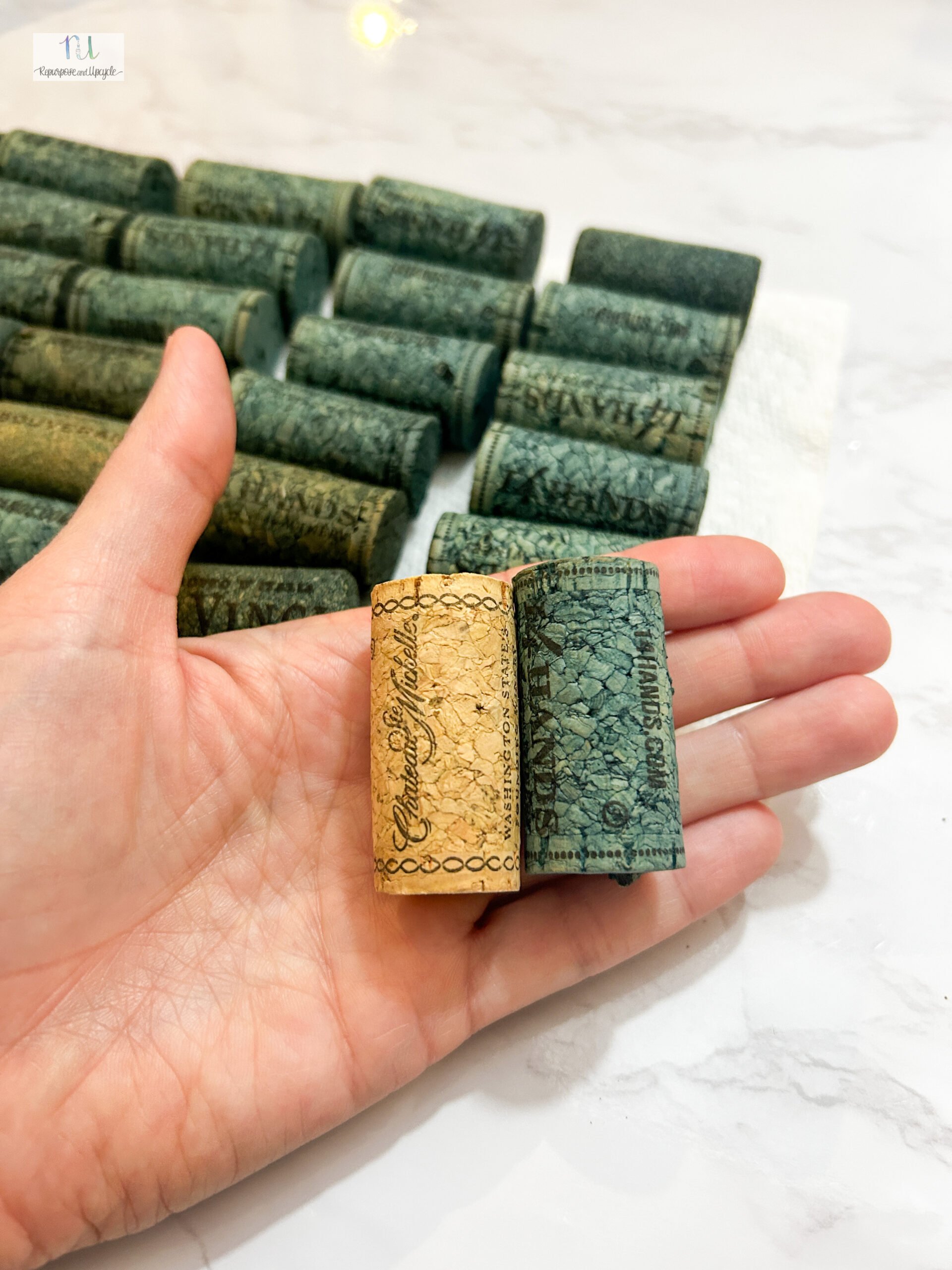If you have furniture with outdated wood tones but don’t want to fully paint over the natural wood, a paint wash is a great solution. A paint wash lets you tone down the color while still showing the wood grain.
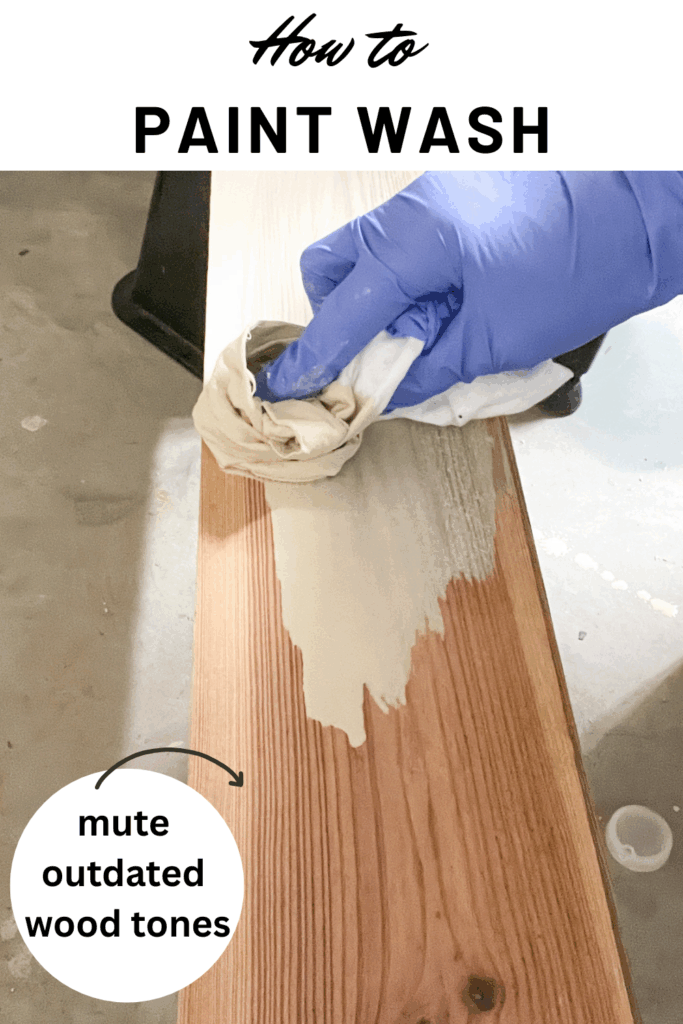
What is a Paint Wash?
A paint wash is a mixture of paint and water (or paint and glaze) that creates a semi-transparent finish. It’s used to lighten, tone down, or change the color of wood furniture without completely covering it.
It can also be called a color wash. Color washing furniture is similar to white washing furniture in that you dilute your paint with water, apply it to the surface and then wipe it off with a lint-free rag.
What paint to use to color wash furniture
My favorite paint for color washing furniture is a regular old latex paint (or any water based). This way it can be easily mixed with water for a beautiful color wash effect.
If you are using an oil based paint, you will need to thin the paint with a solvent like turpentine or mineral spirits.
For this post I chose to use the color Swaying Hammock by Clark and Kensington in satin.
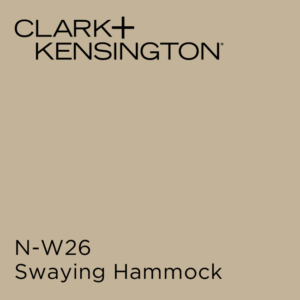
Supplies Needed:
- Water
- Mixing container
- Paintbrush or sponge
- Sandpaper (optional)
- lint free cloths
- water based paint of your choice
- Stir stick
- Wood or base to paint wash
Below is a piece of Heart Pine that I’m going to color wash the surface of the wood. I wanted to mute the orangish red tones and give it a lighter look. As with most DIY projects, always test small areas first to make sure you will get the desired effect.
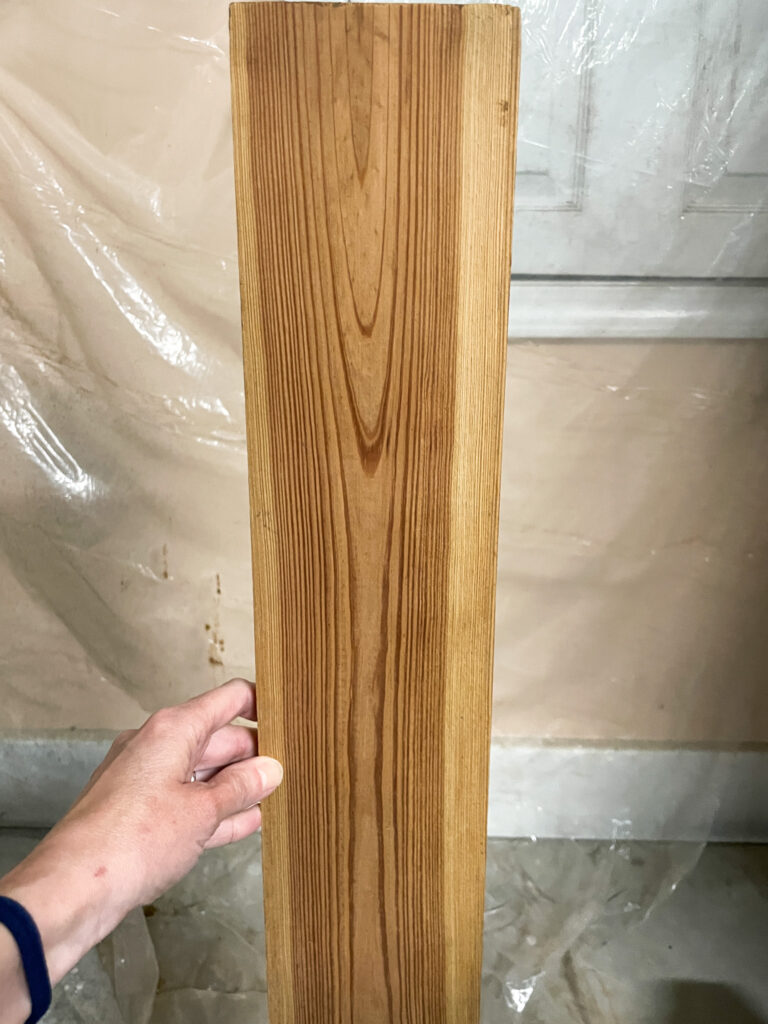
Do you need to sand the piece of furniture before paint washing the wood?
Yes, it is generally recommended to sand furniture before painting it. Sanding helps to smooth out any rough patches or imperfections on the surface of the furniture, which can help the paint to adhere better and create a more even finish. My best suggestion is to sand lightly with a fine grit sandpaper if the surface has a matte or satin paint or sealer. If it has a high gloss finish, you will probably want to start with a heavier grit sandpaper (40-60 grit) and then end with a finer grit (120-360).
Always test a small area first. This is key!
How do you color wash or paint wash wood?
This technique is really simple and there are a few ways to do it. I’m going to show you the easiest way I like to paint wash wood.
- Clean the Furniture: Wipe down your furniture so it’s free of dust and dirt.
- Sand (if needed): Lightly sand if the surface is glossy, so the wash sticks better.
- Mix the Paint Wash: Combine paint and water (usually about 1 part paint to 2 parts water, but you can adjust for more or less coverage).
- Apply the Wash: Brush or sponge the wash onto the furniture in sections.
- Wipe Off Excess: Quickly wipe off the extra wash with a rag, going with the grain of the wood.
- Repeat if Needed: Apply more layers for a stronger effect.
- Let it Dry: Allow the piece to dry completely.
- Seal (optional): Add a clear sealer for extra protection.
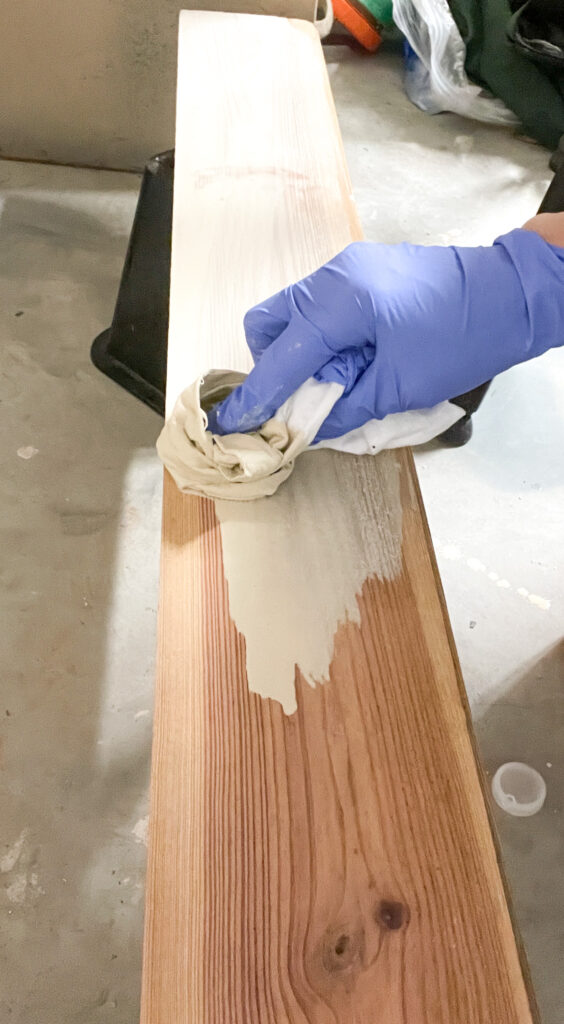
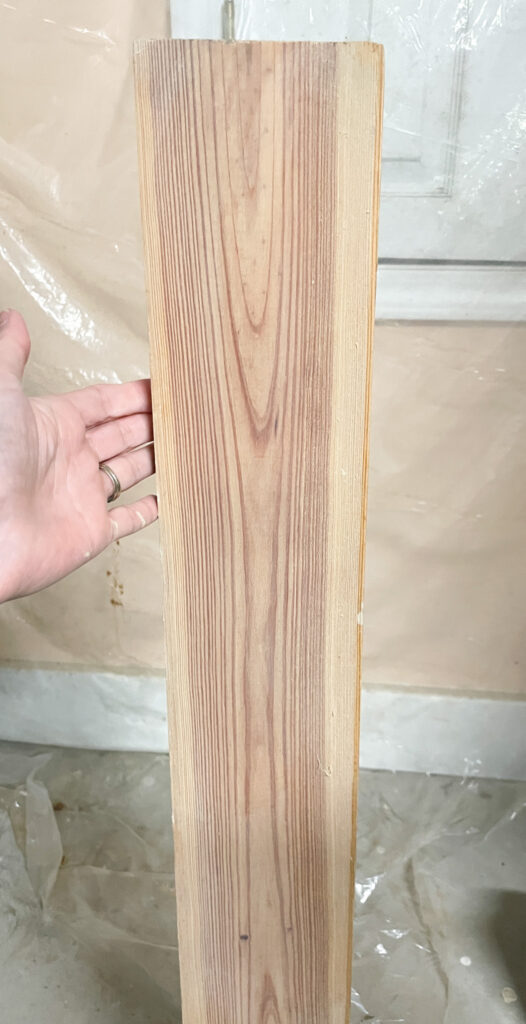
Tips:
- Test your wash on a small area first to see if you like the look.
- You can use different paint colors for different effects (whitewash, gray wash, etc.).
- If you want a more translucent look and more wood grain to show, use more water and less paint. If you want a more opaque look, use more paint and less water.
- Use a wood conditioner before you apply the paint wash. Work in small sections to make sure you get the desired finish. This prevents a blotchy look on the wood surface.
Result:
A paint wash refreshes old furniture, tones down orange or yellow wood, and gives a modern, muted look while keeping the wood’s natural beauty!
Check out my two toned furniture makeover with a tan wash! I love how the top wood piece turned out.
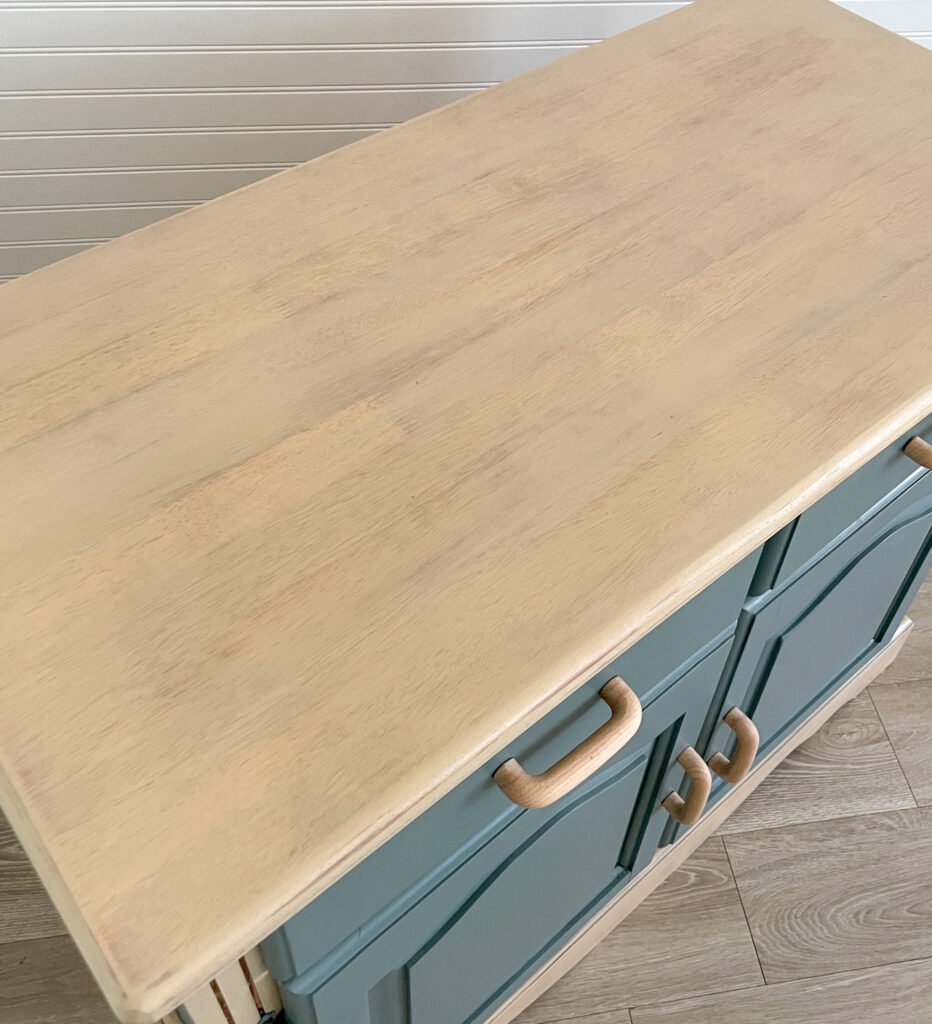
As far as sealers go, I’ve got a few resources for that. Always seal the finished wood!
Best Clear Coat for Wood for a Lasting Finish
How to Seal Painted Furniture for a High Traffic Finish
Do you need to seal whitewash furniture and wood?
Like I said there are a few other ways to create a paint wash. I’ve even seen some creators dip a wet rag in an undiluted paint can and then wipe the surface. The problem with this is that it can create an uneven blotchy look. This is why I prefer to mix the paint with water BEFORE applying it to the surface.
Wasn’t that easy? I wish all my paint projects were this simple.
Lindsey*


